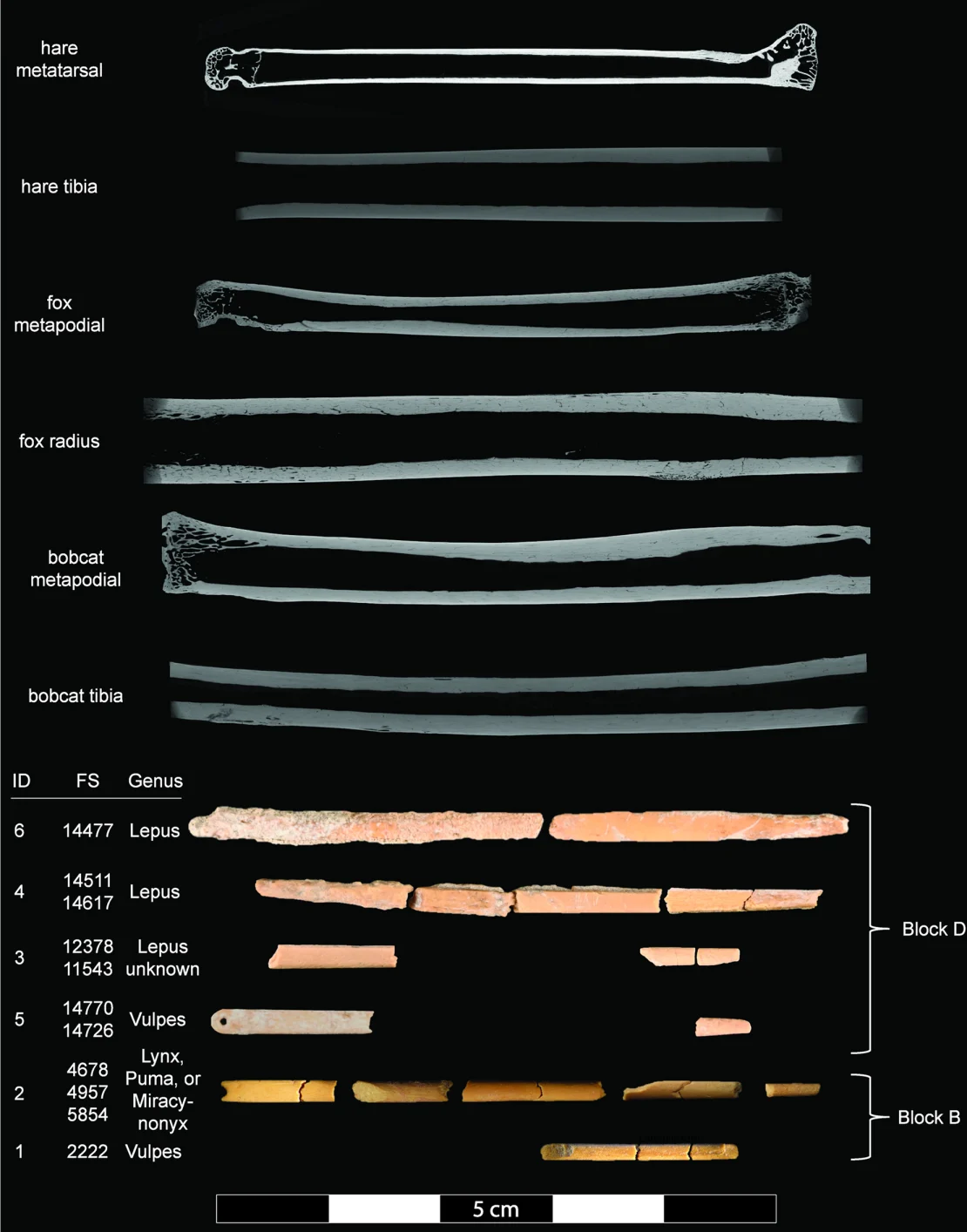A significant archaeological discovery in Wyoming is shedding light on how early Americans survived the harsh conditions of the last Ice Age. Tiny needle fragments unearthed at the La Prele site in Converse County are revealing how prehistoric people crafted clothing to protect themselves from the cold.
The fragments, 32 in total, were found buried 15 feet underground at the site, which is believed to be where a young mammoth was butchered about 13,000 years ago. While these needles are not the oldest known in North America, the discovery is groundbreaking because scientists have identified the material used to create them. Through a process known as zooarchaeology by mass spectrometry (ZooMS), researchers were able to analyze the bone collagen and determine that the needles were made from the bones of small carnivores such as red foxes, bobcats, mountain lions, lynx, the extinct American cheetah, and hares, rather than the expected bison or mammoth bones.
“We had assumed they would be made out of bison or mammoth bone, which are common at sites of this age, but the results were quite surprising,” said Spencer Pelton, Wyoming state archaeologist and lead author of the study, published in PLOS ONE.
The La Prele site was discovered in 1986, and evidence suggests that prehistoric people either hunted or scavenged a mammoth at the location. Archaeologists believe these individuals were likely from the Clovis culture, one of North America’s earliest known human populations.
Needles Found with Precision Excavation
The discovery of the tiny needles required meticulous excavation. The research team used 1/16th-inch fine mesh to sift through excavated soil, uncovering the artifacts. “Few archaeological sites are excavated with this level of precision, and this may explain why such needles have been missed at other sites,” Pelton explained.
The site dates back to the end of the last Ice Age, when temperatures were significantly colder than today, likely between 5 to 7 degrees Celsius lower. To survive such extreme conditions, early humans would have needed well-crafted, tailored garments with tightly stitched seams for warmth. However, clothing from this period is rarely preserved, making the needles a crucial find in understanding how early Americans adapted to the cold.
“These garments would have been similar to those worn by the historic Inuit, designed to protect against harsh climates,” Pelton said. “This would likely have included fur fringes around the sleeves and hoods, which is why small animals like foxes and hares were trapped.”
Crafting Tailored Garments
Before the invention of needles, humans likely wore looser, draped clothing, held together with pointed tools called awls. The new findings suggest that with the development of needles, early Americans could create more tailored and functional garments. Additionally, the needles enabled the decoration of clothes, with one of the oldest beads made from hare bone discovered at the same site.
For thread, early humans likely used sinew from large mammals, such as bison or mammoths.
Animal Trapping and Hunting Strategies
Because small carnivores like foxes and wild cats are difficult to hunt with traditional tools like spears, it is believed that early humans trapped these animals to obtain bones for needle crafting. While direct evidence of trapping has not yet been found at sites of this age in North America, the use of small carnivores makes sense given their size and the ease of crafting needles from their bones.
Ian Gilligan, an expert in archaeology at the University of Sydney, explained that smaller bones from animals like dogs, cats, and hares are ideal for making needles. “These bones are generally the right size and shape, requiring minimal work to turn them into needles,” he said. “For hunter-gatherers, crafting needles is time-consuming, so using small, readily available bones made the process more efficient.”
A Major Technological Innovation
The ability to create tailored clothing was a critical survival advantage for early humans, enabling them to expand into colder regions previously uninhabitable due to the threat of hypothermia. The development of needles marked a significant leap in human innovation and is considered one of the major factors that allowed humans to populate regions like northern Siberia and cross the land bridge into North America.
“Without the ability to make tailored clothes, humans could never have moved into these colder regions,” Gilligan noted. “Needles allowed for better protection from the cold, offering more effective insulation and better protection from the wind.”
The discovery adds to growing evidence that clothing, rather than food acquisition, may have driven some of humanity’s most important technological innovations. The invention of needles stands as a prime example of how early humans adapted to their environment, paving the way for their survival during one of Earth’s harshest climates.


















